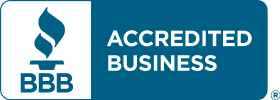Introduction
Email marketing is an effective way to reach customers and promote products or services. It can be a valuable tool for increasing revenue for businesses of all sizes. By sending targeted, personalized messages to specific groups of customers, businesses can increase engagement and conversion rates, leading to higher sales and revenue. In this article, we will discuss several strategies for increasing revenue with email-marketing, including segmenting your email list, personalizing your emails, optimizing your subject line, and using a strong call to action.
1. What is email marketing?
Email marketing is the practice of sending promotional messages or advertisements to a large group of people through email. It is a form of direct marketing that uses electronic mail as a means of communicating commercial or fundraising messages to an audience. The goal of email-marketing is usually to build relationships with customers, increase brand awareness, or drive sales. Email marketing can be used to promote products or services, offer special deals or discounts, share industry news or information, or simply stay in touch with customers. It can also be used to nurture leads and guide prospects through the sales funnel.
2. What are the different types of email marketing?
There are several different types of email marketing, including:
Transactional emails: These are automated emails that are triggered by a specific action, such as a purchase or account creation. They typically include information such as order confirmations, shipping notifications, and password resets.
Direct promotional emails: These are emails that are sent to a large group of recipients with the primary goal of promoting a product or service. They can include information such as sale announcements, new product releases, or special deals.
Relationship-building emails: These emails are designed to build and maintain relationships with customers. They can include information such as company news, industry updates, or helpful tips.
Lead nurturing emails are a series of automated emails sent to prospects who have shown interest in a product or service. They are designed to guide prospects through the sales funnel and convert them into customers.
Re-engagement emails: These are emails that are sent to inactive customers to re-engage them and encourage them to make a purchase.
Abandoned cart emails: These are automated emails sent to customers who have added items to their online shopping cart but have not completed the purchase.
Win-back emails: These are emails that are sent to customers who have unsubscribed or stopped engaging with a company’s emails, to win them back.
Surveys and feedback emails: These emails are sent to customers to gather feedback or information, such as surveys and polls.
3. How to increase revenue with email marketing?
There are several ways to increase revenue with email marketing:
Segment your email list: By segmenting your email list, you can send targeted and personalized messages to specific groups of customers, which can increase engagement and conversion rates.
Personalize your emails: Personalized emails have been shown to have higher open and click-through rates.
Optimize your subject line: Your subject line is the first thing that a recipient sees, so it’s important to make sure it’s compelling and relevant.
Use A/B testing: A/B testing can help you determine which subject lines, calls to action, and email designs are most effective.
Use a strong call to action: Encourage customers to take a specific action, such as making a purchase or signing up for a service.
Re-engage inactive customers: Send targeted campaigns to customers who have been inactive for a while to re-engage them and boost sales.
Leverage the power of automation: Automated email campaigns can help you save time, increase efficiency, and improve targeting.
Measure, track and Analyze: Track your email campaign’s performance regularly and analyze the data to identify areas for improvement.
4. What are the best practises while preparing and sending email marketing campaign?
Best practices for preparing and sending email marketing campaigns include:
Build a clean and targeted email list: Make sure your email list is made up of people who have opted in to receive emails from you and segment your list into different groups based on their interests and behaviour.
Personalize your emails: Use the recipient’s name and other relevant information to make the email more personal and relevant.
Optimize your subject line: Make sure your subject line is compelling and accurately reflects the content of the email.
Make your emails mobile-friendly: With more and more people checking their email on their mobile devices, it’s essential to make sure your emails are optimized for mobile viewing.
Use a clear and compelling call to action: Encourage recipients to take a specific action, such as making a purchase or signing up for a service.
Test your emails: Use A/B testing to determine which subject lines, calls to action, and email designs are most effective.
Schedule your emails at the right time: Consider the time and day of the week your recipients are most likely to be checking their email.
Track and analyze your results: Use email-marketing software to track the performance of your emails and analyze the data to identify areas for improvement.
Follow the laws: Follow the laws and regulations that apply to email marketing, such as the CAN-SPAM Act, GDPR and CASL.
Be consistent: Build a consistent email schedule and stick to it. This will help your audience to anticipate the emails and develop a positive relationship with your brand.
5. How email marketing fits into the marketing strategy?
Email marketing can be a valuable component of a comprehensive marketing strategy. Here are a few ways in which email-marketing can fit into a broader marketing strategy:
Lead generation: Email marketing can be used to nurture leads and guide prospects through the sales funnel. By sending targeted, personalized messages to prospects, email marketing can help increase conversions and drive sales.
Brand awareness: Email marketing can be used to build brand awareness by staying in touch with customers and keeping them informed about new products, services, or company news.
Customer retention: Email marketing can be used to build and maintain relationships with customers by keeping them engaged with your brand. By sending regular, personalized messages, email marketing can help increase customer loyalty and reduce churn.
Cross-selling and upselling: Email marketing can be used to encourage customers to make additional purchases or upgrade to more expensive products or services.
Re-engaging inactive customers: Email marketing can be used to re-engage inactive customers and encourage them to make a purchase.
Measurement: Email marketing can be easily tracked, measured and analyzed, this data can be used to improve the overall marketing strategy.
Integration: Email marketing can be integrated with other marketing channels such as social media, PPC, and SEO to create a cohesive and effective marketing strategy.
Cost-effective: Email marketing is one of the most cost-effective ways to reach a large audience, making it a great addition to any marketing strategy, especially for small businesses or start-ups.
In summary, Email marketing is a versatile and cost-effective way to reach and engage with customers, making it a valuable component of a comprehensive marketing strategy.
Conclusion
Email marketing is a cost-effective way to reach and engage with customers, making it a valuable tool for increasing revenue. By following best practices such as segmenting your email list, personalizing your emails, optimizing your subject line, and using a strong call to action, businesses can improve their email marketing campaigns and drive sales. Additionally, businesses should also use A/B testing, re-engage inactive customers and leverage the power of automation to improve their email marketing campaign’s performance. It’s also important to track, measure and analyze the performance of email campaigns regularly to identify areas for improvement. By incorporating these strategies into their email marketing campaigns, businesses can increase revenue and achieve their desired goals.



